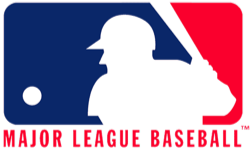 MLB Commissioner Rob Manfred is intent on implementing several measures to speed the pace of play in MLB games, including the use of a pitch clock and a limit on mound visits, but the MLB Players Association is opposing the changes.
MLB Commissioner Rob Manfred is intent on implementing several measures to speed the pace of play in MLB games, including the use of a pitch clock and a limit on mound visits, but the MLB Players Association is opposing the changes.
This not the first time Manfred has attempted to address pace of play. Similar changes were floated by MLB before the 2017 season, but opposition from the MLBPA killed the proposal, and discussions continued this year. For 2018, Manfred now has the power to make changes unilaterally under the latest collective bargaining agreement, which can be made after the Jan. 30 MLB owner meetings in Los Angeles.
The reason for the pace of play discussion: 2017 games averaged a whopping three hours, eight minutes. The pitch clock and limits on mound changes is expected to cut that number down by 10 minutes per game. (There has been a slew of MLB research on pace of play, centered on a 2015 system used by Double-A and Triple-A leagues as well as some rookie-level experiments.) The question is whether the changes will indeed be imposed unilaterally, especially in the face of united opposition from the MLBPA. There is the sense that the game does indeed need to be sped up, but Minnesota Twins second baseman Brian Dozier says the proposed changes won’t work, per the Star Tribune:
“We are all for speeding the game up,” Dozier said. “This is not the way to do it.”
Telling hitters to stay in the batters box, or restricting pitchers from wandering off the mound, is one thing, Dozier said. He had even heard talk of penalizing the worst offenders, perhaps with fines, after the fact. But MLB wants to mandate that umpires change the count — calling a ball for clock violations after the first offense, for instance, or adding a strike if a hitter isn’t ready in a timely manner — and that’s a step players cannot support, he said.
“We don’t want to damage the integrity of the game and change the game completely. If [Manfred’s proposal] does go through, it definitely changes the integrity of the game, and we are all against it,” Dozier said. “There’s so much gray area in the proposal, it just didn’t sit well with us.”
Under the current proposal, it should be noted, pitchers would first receive a warning before a change in the count. The proposed changes are fairly detailed and complicated; Jeff Passan of Yahoo Sports has the details.
The real change would come in how often players, coaches and managers can visit the mound. Under the current Manfred plan, teams would be limited to six mound visits per game. If a manager comes out to replace a pitcher, however, that would not be counted as an official visit. In terms of pace of play, not every inning is equal, and this move is designed to speed up those hour-long eighth innings with multiple pitching changes and many, many visits to the mound — the innings that absolutely suck the life from a game.
RELATED STORIES: PCL Continues Pace of Play Initiatives; Pace-of-game rules impacting the game–in a good way; MiLB unveils pace-of play rules for Double-A, Triple-A Games; MLB announces pace-of-play changes for 2015
